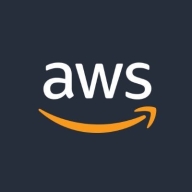

GitLab and AWS CodePipeline compete in the CI/CD tools category. GitLab seems to have the upper hand due to its robust feature offerings and flexibility across different deployment environments, while AWS CodePipeline is praised for its cost-efficiency and seamless AWS integration.
Features: GitLab offers extensive CI/CD capabilities, efficient branch creation and code merging, and allows independent work through a containerized approach. AWS CodePipeline provides flexible configuration, integration with AWS services, and efficient performance, which supports streamlined application deployment.
Room for Improvement: GitLab needs better integration with AWS and enhancements in project management tools, accessibility to metrics, and pricing structures. AWS CodePipeline requires improvements in cloud compatibility, customization, and robust integrations with third-party tools, alongside enhanced documentation and support processes.
Ease of Deployment and Customer Service: GitLab supports diverse deployment setups, including public, private, and hybrid clouds, relying mostly on community support with official options available for paid users. AWS CodePipeline is optimized for public cloud deployment within the AWS ecosystem, providing structured support through AWS Support services.
Pricing and ROI: GitLab offers a tiered pricing model ranging from a free option to paid tiers, which can be more cost-effective for larger enterprises despite concerns over the Ultimate tier's cost. AWS CodePipeline utilizes a pay-as-you-go model, offering predictable costs aligned with usage and demonstrating cost efficiency, especially within the AWS environment.
Migrating to GitLab is bringing time-saving benefits, and everything is easier to automate.
We have saved time significantly, reducing deployment time from four hours to five minutes per deployment.
We have rarely needed to escalate issues to technical support since GitLab usually runs seamlessly.
I have interacted with architects for some advice during the implementation, and they were prompt in their response.
I have had meetings where they taught me, explained things, and provided guidance for starting from scratch.
AWS CodePipeline is good for scalability, and I rate it as nine out of ten.
It has all the features required for our coding and deployment needs, which makes it scalable to our changing requirements.
We're transitioning to OpenShift for future scalability with increased user numbers.
For scaling, other deployment options from GitLab's side need to be adopted.
I rate the stability of AWS CodePipeline as a ten out of ten because I have not experienced any issues with it.
I have not encountered any performance or stability issues with GitLab so far.
The updates are frequent and demanding, happening at least once a week due to security reasons.
We raised a request with GitLab support, but they were unable to help because they could not find the root cause of what went wrong.
The documentation for AWS CodePipeline is lacking and makes it difficult to find information due to its complexity.
It would be beneficial to have a user-friendly interface for setting up these configurations, instead of just writing YAML files.
It is essential to conduct proper testing, such as unit tests and code coverage, within the SDLC pipelines.
GitLab can improve its user interface to make conflict resolution more user-friendly.
I estimated it costs around $5 monthly.
Even when working in other small organizations, we opted for GitLab as it was cost-efficient.
The pricing of GitLab is reasonable, aligning with what I consider to be average compared to competitors.
The price is high, and it limits user accessibility.
It allows me to test changes in an isolated environment before deploying them to the entire user base.
As we implement automated testing and DevSecOps, it speeds up the process by forty to sixty percent.
The Ultimate version offers enhanced features for security scanning through DAST and SAST analysis, which have greatly benefitted our project workflow.
By integrating GitLab as a DevOps platform, we have enhanced agility, improved our time to market, and different teams can work collaboratively on various projects.
| Product | Market Share (%) |
|---|---|
| GitLab | 12.2% |
| AWS CodePipeline | 3.9% |
| Other | 83.9% |


| Company Size | Count |
|---|---|
| Small Business | 13 |
| Midsize Enterprise | 4 |
| Large Enterprise | 7 |
| Company Size | Count |
|---|---|
| Small Business | 35 |
| Midsize Enterprise | 9 |
| Large Enterprise | 42 |
AWS CodePipeline is a fully managed continuous delivery service that helps you automate your release pipelines for fast and reliable application and infrastructure updates. CodePipeline automates the build, test, and deploy phases of your release process every time there is a code change, based on the release model you define. This enables you to rapidly and reliably deliver features and updates. You can easily integrate AWS CodePipeline with third-party services such as GitHub or with your own custom plugin. With AWS CodePipeline, you only pay for what you use. There are no upfront fees or long-term commitments.
GitLab offers a secure and user-friendly platform for CI/CD pipeline management, code repository control, and collaboration, enhancing development speed and efficiency. It facilitates automation with extensive customization and tool integration, ideal for DevOps processes.
GitLab supports source code management, version control, and collaborative development. It's frequently used in CI/CD processes to automate builds and deployments while integrating DevOps practices. GitLab allows companies to manage repositories, automate pipelines, conduct code reviews, and maintain development lifecycles. The platform supports infrastructure and configuration management, enabling efficient code collaboration, deployment automation, and comprehensive repository handling. Many organizations commit and deploy developed code using GitLab's capabilities.
What are GitLab's most valuable features?In specific industries, GitLab serves as a backbone for source code management and CI/CD implementation. Companies leverage its capabilities for infrastructure management and deployment automation, thus streamlining project delivery timelines. Its ability to handle configuration management and code repositories effectively aids in maintaining development lifecycles, making it a preferred choice for organizations committed to enhancing their DevOps practices.
We monitor all Build Automation reviews to prevent fraudulent reviews and keep review quality high. We do not post reviews by company employees or direct competitors. We validate each review for authenticity via cross-reference with LinkedIn, and personal follow-up with the reviewer when necessary.